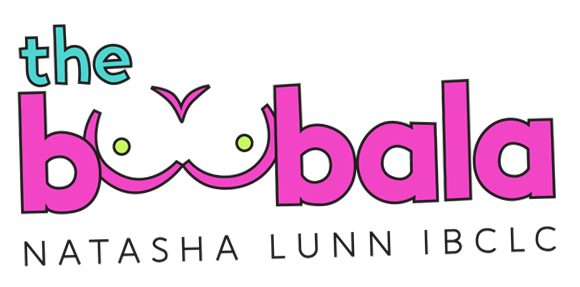Page Content
- What happens if you don’t pasteurize milk?
- Can I pasteurize my own milk?
- How do you pasteurize milk without boiling it?
- How do farmers pasteurize milk?
- Does heating raw milk pasteurize it?
- How did they pasteurize milk in the old days?
- Is unpasteurized milk safe after boiling?
- Does microwaving raw milk pasteurize it?
- Is boiling raw milk the same as pasteurization?
- Does freezing raw milk make it safe?
Understanding Pasteurization
Pasteurization is a crucial process that involves heating milk to eliminate harmful bacteria and pathogens that can cause illness. This method not only enhances the safety of milk but also extends its shelf life. While commercial pasteurization is widely practiced, many individuals may wish to pasteurize milk at home, especially if they have access to raw milk.
The Process of Home Pasteurization
To pasteurize milk at home effectively, you can follow a straightforward method that requires minimal equipment. Here’s a detailed guide on how to do it safely:
1. Gather Your Materials: You will need raw milk, a cooking thermometer, a double boiler or two nested pots, a stirring utensil, and an ice bath (a large bowl filled with ice and water). A timer will also be helpful to keep track of the heating duration.
2. Heating the Milk: Begin by pouring the raw milk into the double boiler or the nested pots. Heat the milk gradually while stirring continuously. The goal is to reach a temperature of 145°F (63°C) for 30 minutes or 161°F (72°C) for at least 15 seconds. Using a thermometer is essential to ensure that the milk reaches the correct temperature, as this is critical for effectively killing harmful bacteria such as E. coli and Salmonella.
3. Cooling the Milk: Once the milk has been heated for the required time, it’s important to cool it down quickly to prevent any remaining bacteria from multiplying. Remove the pot from the heat and immediately place it in the ice bath. Stir the milk constantly until it cools down to 40°F (4°C) .
4. Storage: After pasteurization and cooling, transfer the milk to clean, sterilized containers. Store the pasteurized milk in the refrigerator to maintain its freshness and safety.
Why Pasteurize?
The primary reason for pasteurizing milk is to ensure safety. Raw milk can harbor various pathogens that pose health risks. By pasteurizing, you significantly reduce the risk of foodborne illnesses while preserving the nutritional quality of the milk.
Conclusion
Home pasteurization is a practical skill that can enhance food safety for those who prefer raw milk. By following the outlined steps, you can enjoy the benefits of pasteurized milk while ensuring that it is safe for consumption. Remember, maintaining cleanliness throughout the process is vital to prevent contamination.
What happens if you don’t pasteurize milk?
Raw milk is milk from cows, sheep, and goats — or any other animal — that has not been pasteurized to kill harmful germs. Raw milk can carry dangerous germs such as Salmonella, E. coli, Listeria, Campylobacter, and others that cause foodborne illness, often called “food poisoning.”
Can I pasteurize my own milk?
Guide: How To Pasteurize Raw Milk at Home
- Pour the raw milk into the stainless steel pot.
- Slowly heat the milk to 145 degrees Fahrenheit, stirring occasionally.
- Hold the temperature at 145 F for exactly 30 minutes.
- Remove the pot of milk from the heat and place it in a sink or large bowl filled with ice water.
How do you pasteurize milk without boiling it?
I really recommend a sous vide and a gallon glass jar. Stick the raw milk in the glass jar, put that in a water bath with the sous vide, and give it ~45 minutes at 150 degrees Fahrenheit. Tastes the same 🙂
How do farmers pasteurize milk?
We use a process called vat pasteurization. We heat the milk to 145 degrees F and hold it there for 30 minutes. This is in contrast to big processing plants, which do flash pasteurization, which means they heat the milk to above 186 degrees F for 1 second.
Does heating raw milk pasteurize it?
Raw milk can also be pasteurized in a microwave oven. Heat to 165°F. using a thermometer or temperature probe. Stir the milk once or twice during the heating period to equalize the temperature throughout.
How did they pasteurize milk in the old days?
This process was first used in 1862 and involves heating milk to a particular temperature for a set amount of time in order to remove microorganisms. There are a couple of different methods of Pasteurization. One is heating the milk to a temperature of 161° for 15-20 seconds.
Is unpasteurized milk safe after boiling?
In addition, other pathogens such as salmonella, listeria and the Q fever pathogen can be contained in raw milk. Through sufficient heating of the milk, for example through pasteurisation, ultra heat treatment or boiling, existing pathogens are killed off, however.
Does microwaving raw milk pasteurize it?
Raw milk can also be pasteurized in a microwave oven. Heat to 165°F. using a thermometer or temperature probe. Stir the milk once or twice during the heating period to equalize the temperature throughout.
Is boiling raw milk the same as pasteurization?
Boiling is not the same as pasteurization, although they’re similar. Pasteurization in the United States involves heating milk up to about 160°F for the purpose of killing bacteria that could make you sick.
Does freezing raw milk make it safe?
The answer is yes, you can! Freezing milk is a great way to extend its shelf life. Plus, it can help you save money by taking advantage of store discounts and buying in bulk, then freezing for later. Freezing milk does not impact the nutrients, vitamins or enzymes in Made By Cow Cold Pressed Raw Milk.

